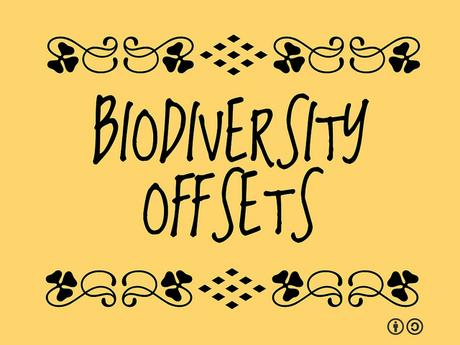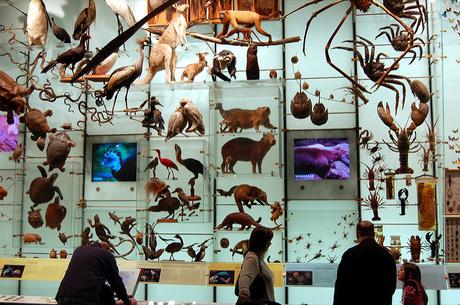What is a Biodiversity Hotspot?
Biodiversity hotspots are regions that are both biologically fertile (rich distribution of plants and animals) and highly threatened. In other words, such biogeographic regions are very productive and are constantly exposed to threats of destruction which warrant the need for them to be protected. Examples of biodiversity hotspots are forest habitats as they constantly face destruction and degradation due to illegal logging, pollution and deforestation.
According to Myers 2000 edition of the hotspot-map, a region only qualifies as a biodiversity hotspot if it meets two criteria. First, it must have at least 0.5% or 1,500 species of vascular plants as endemics – those found nowhere else. Secondly, it must be threatened coupled with a loss of at least 70% of its primary vegetation. Approximately 36 regions around the world qualify as biodiversity hotspots and they support just about 60% of the world’s bird, reptile, mammal, plant, and amphibian species, with the majority of these species as endemics.

According to Wikipedia,
Biodiversity, a portmanteau of “biological diversity,” generally refers to the variety and variability of life on Earth. According to the United Nations Environment Programme, biodiversity typically measures variation at the genetic, the species, and the ecosystem level.
Why are Biodiversity Hotspots Important?
The diversity of plant and animal species in the world as a whole are the most essential units of Earth’s life-support systems. Below are the two major reasons defining the importance of biodiversity hotspots on earth.
-
Biodiversity is the building blocks of all life on earth
With a myriad of diverse species, life on earth is made possible as they create an intricate system for biological interaction and a balanced ecosystem, also known as functional ecological communities. The grand species diversity ensures natural sustainability for all forms of life. Without species and a balanced ecosystem, for instance, there would be no food to eat, no diversity in genes, no air to breathe, or no water to drink. It therefore means that without biodiversity, human would equally be non-existent because biodiversity hotspots are vital for human survival.
-
The map of hotspots extraordinarily extends beyond the map of the natural areas that most benefit human populations
Biodiversity hotspots qualify as one of the most crucial and richest ecosystems in the world as they are home to countless vulnerable human populations who are directly rely upon nature to survive. For this reason, the hotspots serve as the best natural places that most benefit people. Apart from making up about only 2.3% of the Earth’s lands surface, wetlands, forests, and other ecosystems in hotspots make up 35% of the vital “ecosystem services” that vulnerable human populations rely upon. “Ecosystem services” include aspects that contribute to climate stability, nutrient recycling and storage, pollution breakdown and absorption, protection of water resources, ecosystem maintenance, recovery from unpredictable events, and soil protection and formation.
World’s 10 Most Threatened Biodiversity Hotspots
Anthropogenic activities have contributed to rapid extinction rates, especially due to habitat destruction. The few that are still left, mainly the ones with richness in terms of species, genes and ecosystems, also constantly face destruction. Here are 10 of the world’s most threatened biodiversity hotspots.
-
Atlantic Forest – Brazil, Paraguay, Argentina, Uruguay
The Atlantic forest is a hotspot that covers the Brazil’s Atlantic coast and extends to parts of Uruguay, Paraguay and Argentina. The hotspot boasts about 20,000 plant species, 8,000 which are endemic. It is also home to almost 950 birds and many other endangered species. The Black-faced Lion Tamarin, for instance, is among the many adversely endangered species in the Atlantic forest.
The Atlantic forest biodiversity hotspot originally covered more than 1.2 million km2, but coffee and sugar plantations have destroyed the forest, leaving less than 100,000 km2 – (the remaining habitat is just about 8%). The mounting pressure of fresh water supply, cattle ranching and urbanization which increases the demands for manufactured products are as well contributing factors for the continued ravaging of the forest. The predominant vegetation type here is tropical, subtropical moist broadleaf forests.
-
Polynesia-Micronesia, Southern Pacific Ocean
The Polynesia-Micronesia hotspot covers an area of about 41,285 km2 and includes coastal wetlands, coral atolls, savannas, and tropical rainforests. According to Conversation International, the hotspot is described as “the epicenter of the present global extinction crisis”, with 90 endemic bird species threatened and 25 bird species extinct in two centuries as a result of invasive species and overhunting.
-
Cerrado – Brazil
The Cerrado area in Brazil is documented as the largest woodland savannah in South America. Its home to 10 threatened endemic bird species and 4,400 endemic plant species. Some of the unique species found here include the larger mammals namely the giant armadillo, jaguar and the giant anteater. Now the Cerrado hotspot is about 450,000 km2 in size which is a reduction from 2 million km2 as it was originally because of extensive land clearance for growing crops for animal feed and grazing.
-
Himalaya – Nepal, Bhutan, Pakistan, Bangladesh, Myanmar, China
The Himalaya hotspot covers an extensive region including Nepal, Bhutan, Pakistan, Bangladesh, Myanmar, and China. It extends across an area of over 185,427 km2 which includes natural landscapes such as alluvial grasslands, mountains, subtropical broadleaf forests, and alpine meadows. Currently, only one fourth of the original land area remains as it was four times larger originally. Incredible populations of wild water buffalo, vultures, tigers, and elephants still continue to live in this hotspot, but they continually face danger and risk of extinction.
-
Cape Floral Region – South Africa
The cape floral region is located in the Western Cape. It is reported that this hotspot boasts as the region with the world’s largest concentration of diverse plant species per square kilometer. Even the Amazon cannot compare close to it. With about 9,000 diverse plant species, nearly 1,435 have been determined as threatened, and 6,210 are endemic. The Cape floral region is also habitat to the Cape sugar-bird and the geometric tortoise.

-
Coastal Forests – Eastern Africa
This hotspot makes up the coastal forests of Eastern Africa. It contains remarkable degree of biodiversity and extends through the thin corridor along the eastern coast of Somalia, Kenya, Tanzania and Mozambique. The area is habitat to the Tana River mangabey, the Tana River red colobus and the Zanzibar red colobus, which are three greatly endangered primates. The cause for the destruction and continued degradation of the area is due to excessive agricultural expansion for commercial farming and subsistence agriculture. The predominant vegetation type here is tropical, subtropical moist broadleaf forests with only 10% of the original forest remaining.
-
Mesoamerica – Mexico, Guatemala, Belize, Honduras, El Salvedor, Nicaragua, Costa Rica, Panama
The Mesoamerican forests covering Mexico, Honduras, Costa Rica, El Salvedor, Panama, Belize, and Guatemala is a hotspots that is both tropical and subtropical. The ecosystem is known for incredible numbers of endemic mammals, birds and amphibians. The area also hosts more than 17,000 plant species. Furthermore, it’s the habitat of the howler monkey and the quetzal. Now the hotspot is about 226,000 km2 in size which is a reduction from 1 million km2 as it was originally.
-
Indo-Burma – Myanmar, Thailand, Cambodia, Vietnam, India, China
The Indo-Burma – Myanmar hotspot is located in tropical Asia. The region is home to 7,000 endemic plant species including many other threatened species namely 25 mammals, 10 birds, and 35 amphibians. More than 2.2 million km2 of the original environment has been lost, which translates to 5% of the remaining habitat. Up to date, new species are still being discovered with major discoveries of animals such as the Annamite stripped rabbit and the large-antlered muntjac. Spectacular variety of freshwater turtle species are also found in the Indo-Bruma hotspot. The predominant vegetation type here is tropical and subtropical moist broadleaf forests.
-
Philippines, Pacific Ocean
The Philippines hotspot is among the richest areas in biodiversity globally. The area also includes more than 7,100 islands in the pacific. With such a extensive coverage over the surface of the earth, the hotspot is a habitat for 6,000 endemic species and a large indefinite number of bird species including the Philippine eagle and the Cebu flowerpecker. The predominant vegetation type here is tropical, subtropical moist broadleaf forests and the remaining habitat is just about 7%.
-
Madrean Pine-Oak Woodlands, Mexico
Originally, this biodiversity hotspot is located in a mountainous area extended 461,265 km2 across Mexico and a portion of southern USA. Extreme logging has resulted in the loss of 80% of the woodlands original natural cover. Nearly 4,000 endemic plant species exist in the Madrean Pine-Oak woodlands and the hotspot is widely known and esteemed for the millions of monarch butterflies that periodically or seasonally move through the region.

